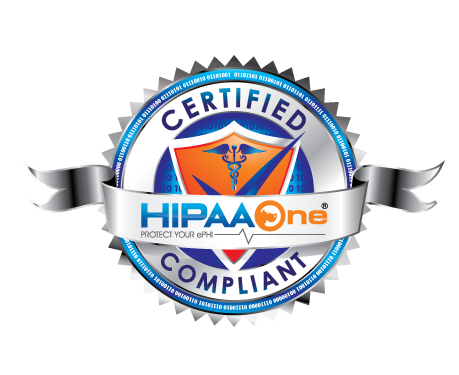 One day, you’re sitting at your computer and rubbing your eyes, frustrated with how itchy they feel. You brush it off as digital eye strain and go about your day, vowing to take more time away from screens after work and over the upcoming weekend. But weeks go by, and your itchy, red eyes don’t feel any better. Now, you’re experiencing light sensitivity and blurred vision, as well. These eye problems you are experiencing may be symptoms of dry eye syndrome.
One day, you’re sitting at your computer and rubbing your eyes, frustrated with how itchy they feel. You brush it off as digital eye strain and go about your day, vowing to take more time away from screens after work and over the upcoming weekend. But weeks go by, and your itchy, red eyes don’t feel any better. Now, you’re experiencing light sensitivity and blurred vision, as well. These eye problems you are experiencing may be symptoms of dry eye syndrome.
Dry eye syndrome is a common, misunderstood condition affecting millions worldwide. In Lancaster County, PA, where the blend of urban and rural environments can contribute to its prevalence, understanding this condition becomes crucial for maintaining good vision and overall health. This blog post aims to shed light on dry eye syndrome’s causes, symptoms, and treatments, offering hope and guidance to those silently suffering.
What Is Dry Eye Syndrome?
Dry eye syndrome, medically known as keratoconjunctivitis sicca, is a common condition. At its core, dry eye syndrome occurs when your eyes do not produce enough tears or when the tears evaporate too quickly. This limited tear production leads to a lack of sufficient moisture on the eye’s surface, causing a variety of uncomfortable symptoms. This imbalance can cause symptoms like eye irritation, redness, sensitivity to light, and blurred vision. Factors contributing to this syndrome include aging, environmental conditions, prolonged screen use, certain medications, and underlying health issues.
The Root Causes: Why Are My Eyes Dry?
Several factors can contribute to the development of dry eye syndrome. Hormonal changes, common in women experiencing menopause or those using birth control pills, can significantly affect tear production. Medical conditions like rheumatoid arthritis, Sjogren’s syndrome, and meibomian gland dysfunction also play a role. Additionally, environmental elements such as dry climates, exposure to air conditioning, and prolonged computer screen use can exacerbate the situation.
Lifestyle choices and medications, including certain high blood pressure drugs, antihistamines, and cold medicines, can further reduce tear production. Interestingly, even everyday activities like using hair dryers or being exposed to smoke can contribute to dry eye symptoms.
What Are the Symptoms of Dry Eye?
The symptoms of dry eye syndrome range from mild to severe and can impact every aspect of life. Recognizing them early can help you get prompt diagnosis and treatment, especially for those who live in areas where environmental factors might exacerbate the condition. Here’s a more detailed bulleted list of the symptoms associated with dry eye syndrome:
- Scratchy Sensation: Feeling as if sand or some foreign body is in the eye, causing discomfort.
- Painful Eyes: Persistent soreness or eye pain, not necessarily linked to physical injury.
- Redness: Visible reddening of the eyes, indicating irritation or inflammation.
- Blurry Vision: Occasional or persistent blurring of vision that cannot be corrected with blinking or eyeglasses.
- Sensitivity to Light: Increased discomfort or difficulty in seeing when exposed to bright lights or sunlight.
- Watery Eyes: Ironically, excessive tearing can occur as the eye tries to compensate for the dryness.
- Fatigue: Eyes may feel more tired than usual, especially after activities requiring visual concentration, like reading or using a computer.
- Difficulty Wearing Contact Lenses: Contacts may become uncomfortable to wear for the usual duration.
- Mucus Around the Eyes: There may be the presence of stringy mucus in or around the eyes.
In severe cases, if left untreated, dry eye syndrome can lead to more serious complications, including:
- Increased Risk of Eye Infections: The lack of adequate tear production can reduce the eye’s ability to wash away irritants and protect against infection.
- Damage to the Surface of the Eyes: Prolonged dryness can lead to inflammation, abrasion of the corneal surface, corneal ulcers, and potentially, vision impairment or loss.
For individuals in Lancaster County and beyond, being vigilant about these symptoms and seeking medical advice as soon as possible once symptoms begin can help manage dry eye syndrome effectively, preventing it from interfering with daily life and leading to more severe health issues.
What Dry Eye Syndrome Treatment Options Can I Find in Lancaster, PA?
Thankfully, numerous effective treatments are available for dry eye syndrome. Treatment focuses on restoring the normal tear balance through artificial tears, prescription medications, tear duct procedures, and lifestyle adjustments. Medicated eye drops and artificial tears can provide immediate relief by lubricating the eye’s surface and promoting a healthy tear film. Doctors may prescribe anti-inflammatory drops or recommend procedures to clear the blockages for those whose condition stems from blocked tear ducts or inflammation.
Warm compresses and lifestyle changes like taking breaks from screen time, drinking plenty of water, and using humidifiers to add moisture to dry air, can also make a difference. In more severe cases, treatments like punctal plugs, which prevent tears from draining too quickly, or scleral lenses, which create a moist chamber over the eye, offer additional options. With appropriate management, those who suffer from dry eye can significantly alleviate the discomfort associated with this issue, improving their quality of life.
How Can I Prevent Dry Eye Syndrome?
Prevention plays a key role in managing dry eye syndrome; you can take proactive steps to protect your eyes before this issue occurs. Simple measures like wearing wraparound sunglasses outdoors to shield eyes from dry winds, avoiding direct exposure to air conditioning and heaters, and including omega-3 fatty acids in your diet can help maintain eye health.
Moreover, being mindful of the medications that can contribute to dry eye and discussing alternatives with healthcare providers can prevent the condition from developing or worsening.
Get Help for Dry Eye and Enjoy A Clearer Tomorrow
This issue doesn’t have to be a perpetual struggle for those with dry eye in Lancaster County. You can find the relief you need by understanding the causes, recognizing the symptoms, and exploring treatment options available with the eye health professionals at Campus Eye. Remember, the key to combating dry eye is treatment and prevention. With the right approach, everyone can enjoy the beauty of Lancaster County with clear, comfortable vision.
Whether it’s through adopting healthier lifestyle habits, seeking specialized treatment, or simply being more aware of environmental factors, there’s hope for those dealing with dry eye syndrome. Embrace these solutions and look forward to a future where dry eye no longer blurs our view of the world around you. Contact us today to schedule an eye exam.

 Campus Office
Campus Office


